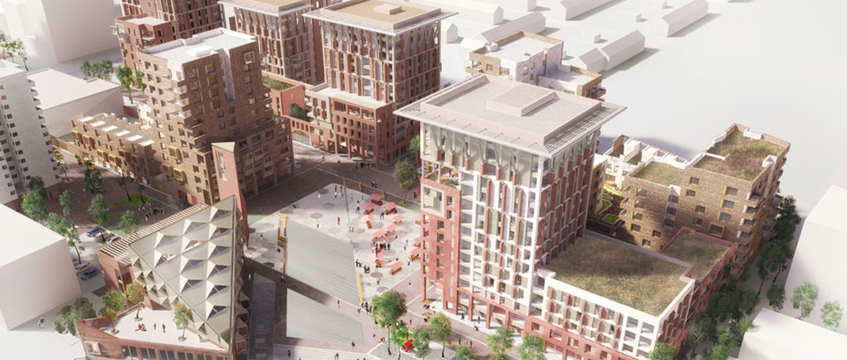Peabody – the £6bn housing association created by the merger between Peabody and Family Mosaic – is looking for opportunities around new towns and Greater London Authority land disposals, as well as searching for a development partner for its Thamesmead project.
According to new chief executive Brendon Sarsfield, the association will increase its development activities.
And he says that while the mammoth 20,000-home development at Thamesmead, SE28, will account for about a third of that activity, it is looking for new opportunities – including new settlements outside London.
“We will look to develop more in Essex and we are keen to look at new settlements that help London solve its housing problem. Lots of people are talking about such things, and we just want to be part of those discussions,” he says.
The merger also will allow the association to go from developing sites of 250 homes to sites with over 1,000 homes.
It will have a total of 55,000 homes on its books, mostly in London and the South East.
“That base gives us an opportunity to take more risk, to tackle some of London’s challenges,” he says. “We are twice the size, but it feel like three or even four times the opportunities could emerge from it.”
Partnership plans
Sarsfield, previously head of Family Mosaic, is adamant that Thamesmead will not dominate the new company.
One of the early conversations around the merger had been about whether Thamesmead had the potential to “drag us all in”.
“The answer is definitely not,” he says.
“What we might be doing in Thamesmead is a lot more packing up sites for others to develop. The more you understand Thamesmead, the more you understand the risks and timing of delivery. If the market changes, we can slow down.”
Sarsfield says Peabody is continuing to explore options for a strategic partner with “deep pockets” to bring forward the scheme, and help mitigate some development risk.
“In particular we will be looking for a strategic partnership to build that out. By being more commercial and thinking we want to share that risk with someone, not do it all ourselves,” he said.
However, Peabody is still consulting on what form any partnership will take.
Peabody’s newly announced strategic partnership with the GLA, which follows on from those agreed with L&Q and Hyde Housing, will be less specific.
Sarsfield says the main benefit is an open dialogue.
“It’s more about our relationship with perhaps the biggest land player in London, the biggest housing influencer of policy in London,” he says.
“The important thing is a one-to-one relationship, where you have a chance to explain what you are trying to deliver.”
Social purpose
The plan now, according to Sarsfield, is to expand incrementally, though there will be no finance raising in the short term.
“From a development perspective there is a food chain, you have the sites you already own, the sites you want to buy, to complete, the joint ventures you will create. All of those things you just want to notch up a bit,” he says.
“It’s not the beginning of a sausage machine, you have got to improve the whole thing.”
He also says that despite the increasing amount of private sector development, housing associations have not lost their social purpose.
“Some people say housing associations have lost their soul. [But] the market is such that to deliver our soul we have to do commercial things, we have to take a commercial approach to deliver our social purpose,” he says.
“I came into this business to provide social housing and wonderful housing for people on low incomes. And I am still committed to that.”
To send feedback, e-mail alex.peace@egi.co.uk or tweet @egalexpeace or @estatesgazette











